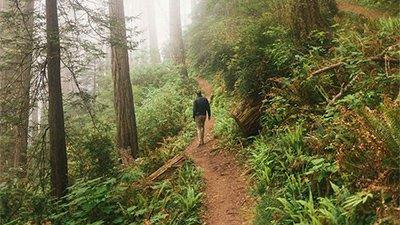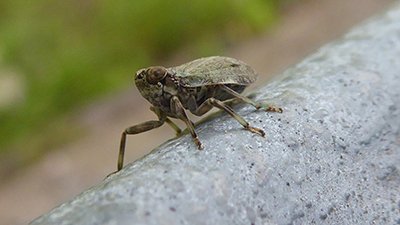
The Gecko Tail and Its Feats
Regardless of the attention given to those clingy gecko feet, gecko tails play an important role in keeping the mobile little creatures agile.
News Source
- ScienceNOW: “One Tail, Many Feats”
A study of the biomechanics of geckos discovered that the animals use their tails for extra control when they slip or fall, helping them steer and move their weight as they climb or even glide.
Biomechanical scientist Robert Full of the University of California–Berkeley, who has studied how geckos get around for more than a decade, had previously conducted experiments to try to determine exactly what role the gecko tail plays. When running on high-traction surfaces, the geckos never used their tails.
But when engineers designed robotic “geckos” to climb walls, they were forced to add tails to keep the machines from tumbling. Full wondered if he had overlooked the role of the gecko tail, and set up experiments to re-examine it.
The team Full led “challenged” geckos with a track designed to make them slip. For instance, the researchers had their gecko examinees run up a vertical track that included a section of slippery whiteboard. ScienceNOW’s Elsa Youngsteadt explains, “When their front feet reached the slick spot, the geckos lost traction and began to tip away from the wall. That’s when the tail took over, making the lizard’s body act like a seesaw anchored at the hind legs.” In other words, as Full put it, the gecko tail is an “emergency fifth leg.”
The team also placed the geckos upside-down on the bottom of a platform that “jiggled like a quaking leaf.” Unsurprisingly, the geckos lost their grip, yet in less than a tenth of a second of falling to the floor, they were universally able to rotate to land on all fours. How? Full says the lizards swept their tails around swiftly to rotate their bodies into “superman” or “skydiving” posture, allowing them to land on all fours. This gave Full’s team yet another idea: were the geckos able to control themselves in the air and “glide”?
Who knew a gecko could someday help us make better robots or maneuver ourselves in outer space?
To answer the new question, the team put the geckos in a vertical wind tunnel. Most animals that can’t fly would have just tumbled around out of control, but the geckos glided neatly, turning and waving their tails to steer and keep themselves upright. Apparently there’s far more to the gecko than meets the eye!
Full says learning more about geckos’ tails may bring improvements to both aircraft and spacesuit design, in addition to helping engineers perfect the gecko-imitating wall robots. Biophysicist Kellar Autumn of Lewis and Clark College, calling the research an interdisciplinary success story, adds, “Who knew a gecko could someday help us make better robots or maneuver ourselves in outer space?”
And of course, while evolutionists have no choice but to chalk this incredible design up to the blind watchmaker of evolution, creationists see that this is just one of the millions of signs of God’s brilliant handiwork in nature.
Further Reading
- Get Answers: Design in Nature
For More Information: Get Answers
Remember, if you see a news story that might merit some attention, let us know about it! (Note: if the story originates from the Associated Press, FOX News, MSNBC, the New York Times, or another major national media outlet, we will most likely have already heard about it.) And thanks to all of our readers who have submitted great news tips to us. If you didn’t catch all the latest News to Know, why not take a look to see what you’ve missed?
(Please note that links will take you directly to the source. Answers in Genesis is not responsible for content on the websites to which we refer. For more information, please see our Privacy Policy.)
Recommended Resources

Answers in Genesis is an apologetics ministry, dedicated to helping Christians defend their faith and proclaim the good news of Jesus Christ.
- Customer Service 800.778.3390
- Available Monday–Friday | 9 AM–5 PM ET
- © 2025 Answers in Genesis




